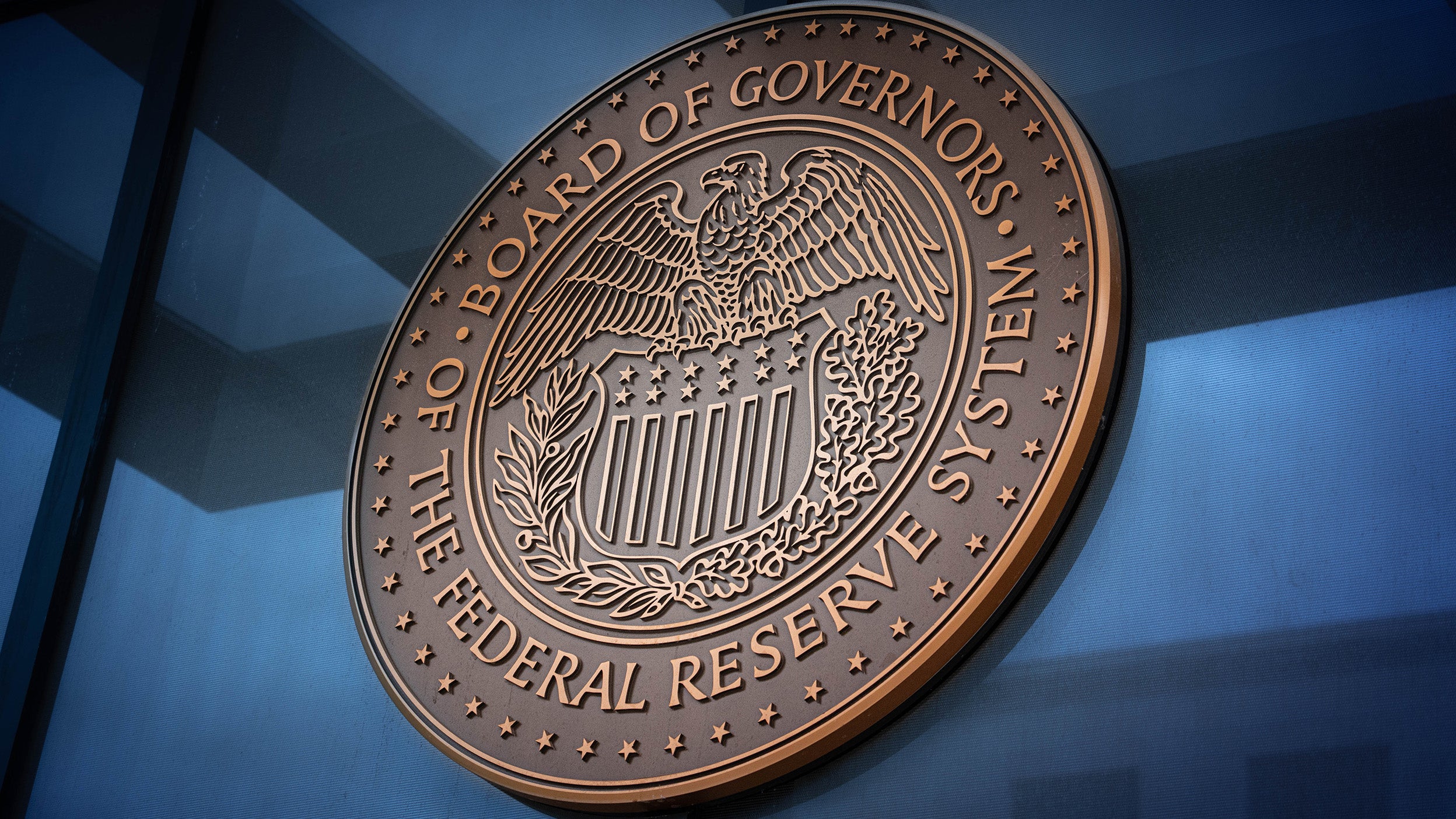
Markets and Economy Has the catalyst for stock diversification arrived?
For investors looking to diversify their mega-cap technology exposure, improving growth and falling interest rates may be good reasons.

While today’s spending on artificial intelligence has parallels to past bubbles, there are also meaningful differences.
News of default and stress from some US regional banks sparked fears of a credit crisis, but it appears to be isolated events.
Earnings season is underway, and the general message from the major US banks that have reported so far is encouraging.
The phrase “wake up the echoes” originated in the University of Notre Dame fight song, evoking memories of crisp fall Saturdays, pageantry, and the enduring spirit of college football. It’s a call to summon the greatness of the past. This week, however, the echoes we’ve heard are of a different kind, less nostalgic, more cautionary. Echoes of the tech bubble, the credit crisis, and the 2018 government shutdown.
And yet, the S&P 500 Index sits just shy of an all-time high.1 The backdrop appears supportive: positive outlook for growth,2 falling oil prices,3 contained inflation expectations,4 yields that aren’t prohibitively high,5 and a Federal Reserve seemingly poised to ease further.6
Still, the questions linger.
Could something be lurking that might derail what looks like a constructive environment for risk assets still? The fact that these concerns are being raised suggests that the markets are still climbing a wall of worry. The time to worry is more typically when nobody else seems to be worrying.
Let’s explore those key worries.
Our short answer: Not yet.
Some concern stems from the nature of today’s artificial intelligence (AI)-driven investment cycle. There are parallels to past bubbles, particularly in the circular relationships forming between suppliers, customers, and investors. But there are also meaningful differences. The companies leading the charge today are well-capitalized, have been generating strong cash flow, and operate proven business models.7 Valuations, while elevated, are far from the extremes of the dot-com era. For instance, NVIDIA trades at roughly 23x forward earnings — far below the 80x multiple Cisco commanded at the peak of the 1990s bubble.8
Back then, infrastructure was built without a clear use case. Today, demand is overwhelming. NVIDIA has essentially said it can’t ship chips fast enough. Taiwan Semiconductor (TSMC) echoed that sentiment in its latest earnings report, delivering better-than-expected results and announcing plans to increase capital spending. While we make no comment on the stock itself, the report reinforces the idea that large-scale tech investment is continuing unabated.
That said, risks remain. Some firms, like OpenAI, have committed to substantial spending and are reliant on continued access to capital markets. Meta’s Mark Zuckerberg recently stated that the risk of misspending a couple of hundred billion dollars is better than not spending it9 — we can all relate. If funding dries up, particularly for companies that are deeply interconnected, it could trigger a meaningful repricing of stock valuations. There had been few signs of stress in the capital markets, but late in the week, there were concerns that investors were assessing closely.
Our short answer: Last week’s banking issues appear to be isolated events.
Recent defaults and select regional bank stress have investors worried about the implications for the financial system. But we don’t believe the recent defaults by First Brands and Tricolor are “canaries in the coal mine.” (No, coal miners don’t use canaries anymore, but “electronic sensors in the coal mine” isn’t quite as evocative.)
These appear to be idiosyncratic events, albeit ones that have drawn outsized media attention.
The signs of overall credit deterioration remain limited. The major money-center banks are well capitalized and reported strong earnings this week — we’ll get to that below. While the above losses capture headlines, other regional banks have reported lower credit provisions than analysts had anticipated.
Investors are right to monitor developments closely, but for now, these defaults seem isolated, not systemic. It’s worth remembering that defaults happen all the time. If they didn’t, everyone might borrow at a risk-free rate.
Our short answer: We’re hearing good things from major banks.
Earnings season is underway, with many of the largest US banks reporting results for the most recent quarter. Commentary from management teams offers valuable insight, not only into the performance of their own businesses, but also into the broader economic landscape. The general message from the banks that have reported so far is encouraging, in our view.
Earnings are coming in ahead of consensus forecasts. Loan growth and trading activity remain strong. Customers are largely keeping up with their debt obligations. Morgan Stanley, for instance, recorded zero provisions for credit losses last quarter. While there are signs of slowing activity among lower-end consumers, the wealth management segments of these institutions appear to be thriving. That’s not surprising — asset prices are near all-time highs,10 which can give affluent households more capital to allocate and money to spend. As long as this dynamic holds, we believe the positive wealth effect that has helped sustain the US economy should remain intact.
Our short answer: We don’t know. (This is pretty much our long answer as well.)
Keep in mind that historically, government shutdowns have concluded without significant incident to the economy and financial markets.11
Date |
Region |
Event |
Why it matters |
|---|---|---|---|
Oct. 21 |
Eurozone |
German Ifo Business Climate Index |
Gauges business sentiment; a leading indicator of economic health |
Oct. 21-25 |
Global |
IMF Annual Meetings |
Key discussions on global economic policy, financial stability, and development |
Oct. 22 |
US |
Richmond Fed Manufacturing Index (Oct.) |
Measures regional manufacturing activity; signals broader industrial trends |
Oct. 23 |
US |
Existing home sales (Sept.) |
Indicates housing market strength and consumer confidence |
|
Canada |
Interest rate decision |
Signals Bank of Canada (BOC) monetary policy stance |
Oct. 24 |
Eurozone |
UK Flash Manufacturing & Services Purchasing Managers’ Index (Oct.) |
Early read on business activity across sectors; key for growth and inflation outlook |
|
US |
Initial jobless claims (Oct. 19) |
Weekly labor market indicator; helps assess employment trends |
|
US |
New home sales (Sept.) |
Reflects housing demand and construction momentum |
Oct. 25 |
US |
Durable goods orders |
Key indicator of business investment and manufacturing demand. |
|
US |
University of Michigan Consumer Sentiment (final Oct.) |
Gauges consumer confidence and inflation expectations |

For investors looking to diversify their mega-cap technology exposure, improving growth and falling interest rates may be good reasons.

A rate cut, which markets are pricing in despite Fed member differences, and an expected improving economy in 2026, could support stocks.

We believe global equities may continue to rise in the new year, and we expect new opportunities to be unlocked as market leadership evolves.
Important information
NA4913162
Image: Shannon Fagan / Getty
All investing involves risk, including the risk of loss.
Past performance does not guarantee future results.
Investments cannot be made directly in an index.
This does not constitute a recommendation of any investment strategy or product for a particular investor. Investors should consult a financial professional before making any investment decisions.
Cash flow is the net amount of cash and cash equivalents generated by a business.
Forward earnings per share is a variant of earnings per share and is calculated using a company’s projected earnings over the next 12 months divided by the number of outstanding shares.
Gross domestic product (GDP) is a broad indicator of a region’s economic activity, measuring the monetary value of all the finished goods and services produced in that region over a specified time period.
The German Ifo Business Climate Index assesses the current German business climate and measures expectations for the next six months, based on a survey of manufacturers, builders, wholesalers, and retailers.
Idiosyncratic developments refer to unique events that do not affect an entire market or portfolio.
Inflation is the rate at which the general price level for goods and services is increasing.
Purchasing Managers’ Indexes (PMI) are based on monthly surveys of companies worldwide and gauge business conditions within the manufacturing and services sectors.
A risk asset is generally described as any financial security or instrument that carries risk and is likely to fluctuate in price.
The risk-free rate represents the interest an investor would expect from an absolutely risk-free investment over a specified period of time.
The S&P 500® Index is an unmanaged index considered representative of the US stock market.
Many products and services offered in technology-related industries are subject to rapid obsolescence, which may lower the value of the issuers.
Treasury Inflation-Protected Securities (TIPS) are US Treasury securities that are indexed to inflation.
West Texas Intermediate (WTI) is a type of light, sweet crude oil that comes from the US.
The opinions referenced above are those of the author as of Oct. 17, 2025. These comments should not be construed as recommendations, but as an illustration of broader themes. Forward-looking statements are not guarantees of future results. They involve risks, uncertainties, and assumptions; there can be no assurance that actual results will not differ materially from expectations.
This link takes you to a site not affiliated with Invesco. The site is for informational purposes only. Invesco does not guarantee nor take any responsibility for any of the content.